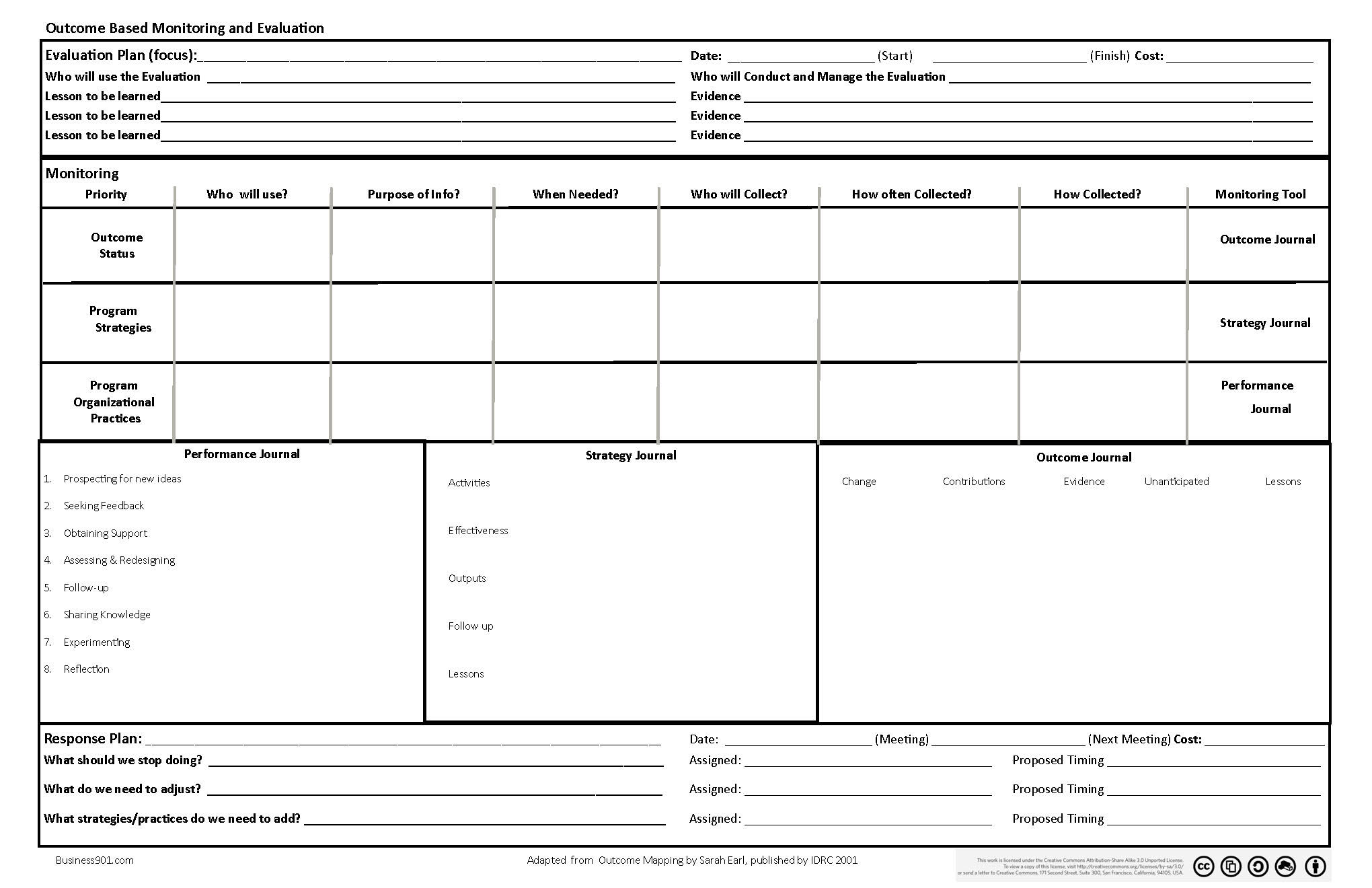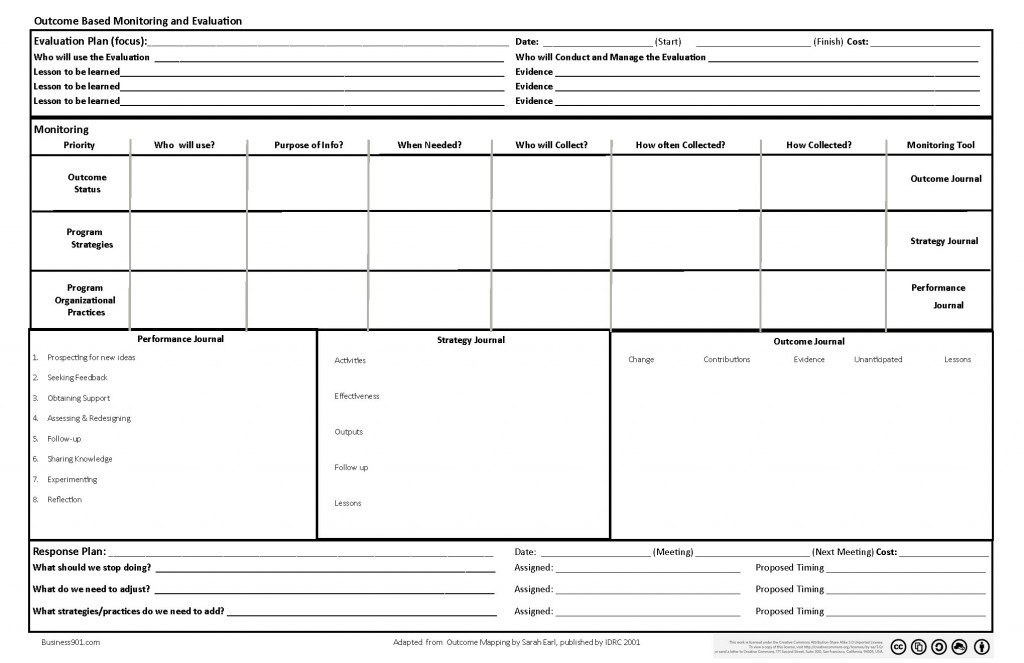I have written sparingly the last few years about Outcome-Based Mapping and have used it more and more in my work and specifically in developing marketing plans. What makes the focus on outcomes somewhat different is that we view them from a change in the relationship, activities or actions of the people and organizations that we are working with. We are not necessarily focusing on one specific outcome but a group of outcomes and in my work not one specific customer but a cluster of companies that have similar needs, desires and/or behaviors in what they are trying to get done.
One area that I wanted to address in this post is the monitoring and evaluation planning that I have learned from outcome mapping. It is an area that most of us spend a lot of time on always looking at how measure things. Seldom do I see monitoring and evaluation (testing and measurement) planning from a more systematic viewpoint. The events are rather singular and lack a cohesive structure. This is an area that the Outcome Mapping approach, though it seemed clunky at first, after reviewing and practicing it a few times has really started to pay off. Enclosed is a generic outline that will require adoption to your own set of needs and organizational practices.
What makes this work so well, is the concentration on three different areas. From the book, Outcome Mapping: Building Learning and Reflection into Development Programs
Outcome Mapping introduces monitoring and evaluation considerations at the planning stage of a program. It also unites process and outcome evaluation by collecting data on the program’s success in implementing its strategies and the results being achieved by its boundary partners. Separating process and outcome evaluation are misleading because it implies that an organization achieves outcomes as a direct result of implementing a program.
This approach removes the idea that evaluation and monitoring are something you do to a program. Rather it is something that is done as part of the program and often times utilizing self-assessment. It provides the tools for a program to tell its performance story. It does this by monitoring three key functions:
- Outcome Changes
- Programs Strategies
- Organizational Practices
Most typical practices in sales and marketing judge success by the latest marketing fad or the latest program, etc. We are always adjusting strategies or trying something new waiting for the next silver bullet. Seldom do we review on a regular basis these three functions together. The enclosed PDF and jpeg above is not a final draft on my part and will need some simplifications. The journal themselves are usually separate Google Docs, but I was making the attempt to put them on one A3. The key to this structure is that Monitoring and Evaluation happen early in the planning stage with the assignment of responsibilities and meetings starting from the very beginning. You can read more about each block, in the separate blog post; Mapping Expectations of Customer Behavior
Do you have an overall plan for your testing and measurements?
Do you take a systematic approach for monitoring and evaluation?
Lean Sales and Marketing: Learn about using CAP-Do


